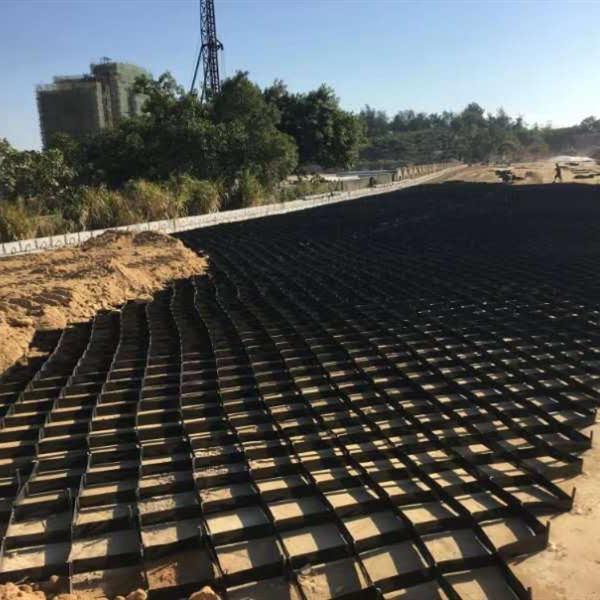close
Choose Your Site
Global
Social Media
Views: 0 Author: Site Editor Publish Time: 2023-09-15 Origin: Site








Geocells have gained immense popularity in the construction industry due to their unique structural design and various applications. But what exactly is the structure of a Geocell? In this article, we will delve into the components that make up a Geocell and explore its wide range of applications.
Geocell is a revolutionary technology that has gained significant popularity in the civil engineering field. It is a three-dimensional cellular confinement system that consists of interconnected cells made from high-density polyethylene (HDPE) material. These cells are filled with compacted soil, aggregate, or other granular materials to create a stable and load-bearing structure.
One of the key components of geocell is the cell wall. The cell wall is made from a strong and durable material that provides structural integrity to the geocell system. It is designed to withstand heavy loads and distribute the load evenly across the entire area. The cell walls also have perforations or holes that allow for the drainage of excess water, preventing the accumulation of water within the system.
Another important component of geocell is the connection mechanism. The cells are interconnected using a simple and efficient connection mechanism that ensures the stability and integrity of the overall structure. This connection mechanism allows for the quick and easy installation of the geocell system, saving both time and labor costs.
The third component of geocell is the infill material. The cells are filled with compacted soil, aggregate, or other granular materials, depending on the specific application. The infill material provides additional strength and stability to the geocell system, enhancing its load-bearing capacity. It also helps to prevent soil erosion and retain the infill material within the cells.
Geocell structures have revolutionized the way we approach various engineering applications. These innovative cellular confinement systems offer a wide range of benefits and are extensively used in civil and environmental engineering projects.
One of the key applications of geocell structures is in soil stabilization. By confining and reinforcing soil, geocells provide increased load-bearing capacity and prevent soil erosion. This is particularly useful in areas with weak or unstable soil conditions, where traditional construction methods may not be feasible. Geocells effectively distribute loads and improve the overall stability of the soil, making them ideal for applications such as road and railway construction, embankments, and retaining walls.
Another significant application of geocell structures is in erosion control. With the increasing concern about environmental degradation and the need for sustainable solutions, geocells have emerged as an effective tool for preventing soil erosion. These structures can be deployed in slope protection projects, riverbank stabilization, and shoreline protection. The interconnected cells of geocells help retain soil particles, prevent surface runoff, and reduce the impact of water flow, thereby preserving the integrity of the surrounding environment.
Geocell structures also find extensive use in the construction of load-supporting platforms. These structures excel in load distribution, making them suitable for constructing stable and durable platforms for various applications. From parking lots and airport runways to helipads and industrial yards, geocells provide a cost-effective and efficient solution for creating robust load-bearing surfaces. The cellular confinement system of geocells effectively reduces the stress and strain on the underlying soil, extending the lifespan of the constructed platforms.
Furthermore, geocell structures have proven to be highly effective in the field of green infrastructure. They are widely used in the construction of green roofs and vegetated walls, enhancing the sustainability and environmental performance of buildings. Geocells provide a stable and supportive base for vegetation, promoting healthy growth and minimizing the risk of erosion. The increased green cover offered by geocells helps mitigate the urban heat island effect, improve air quality, and provide numerous ecological benefits.
Geocell is a versatile and effective solution for various civil engineering applications. Its main components, including the cell wall, connection mechanism, and infill material, work together to create a stable and load-bearing structure. Geocell has numerous benefits, such as improved load-bearing capacity, soil erosion prevention, and easy installation. It has become an integral part of modern civil engineering projects. Geocell structures have diverse and extensive applications, including soil stabilization, erosion control, load support, and green infrastructure. These innovative cellular confinement systems have revolutionized the field of engineering. Geocells are preferred by engineers and developers due to their unique properties and cost-effectiveness, providing sustainable, efficient, and durable solutions.